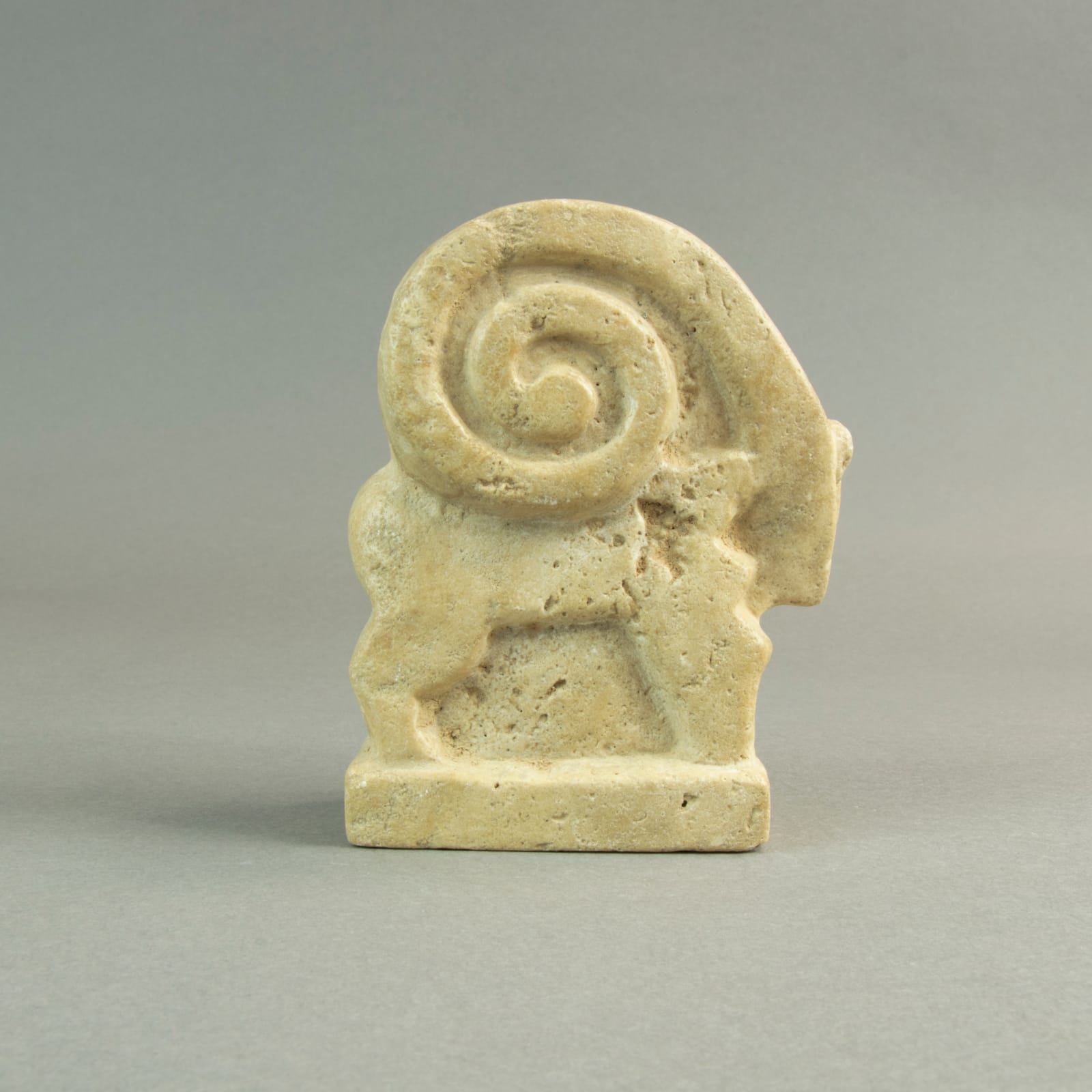Sabean Ram Sculpture, 500 - 200 BCE
height 10.5 cm
height 4 1/8 in
height 4 1/8 in
ES.9786
Further images
This meticulously rendered figure of conjoined rams is a stunning example of Sabean limestone figurative art. The two rams are shown sitting, with their legs tucked, and provides two unique...
This meticulously rendered figure of conjoined rams is a stunning example of Sabean limestone figurative art. The two rams are shown sitting, with their legs tucked, and provides two unique views which form a sort of optical illusion. From the side, the sculpture appears as one ram, but upon viewing it from the front, two rams’ heads with dramatically curled horns appear, seemingly sharing one body.
The ancient kingdom of Saba ruled over the lands of southern Arabia, centered in modern day Yemen. Saba is perhaps better known as Sheba, the Hebrew word for the kingdom, whose famous Queen was recounted as having visited Solomon in the pages of the Old Testament. Biblical accounts speak of the wealth of this ancient civilization of traders and merchants, and modern archaeological excavations confirm these reports. Ruins of fortresses and walled towns are evident and remnants of their extensive irrigation system that turned the desert into a paradise still cover the land. Although gold and silver deposits were present, the chief source of their vast wealth was derived from their veritable monopoly of two of the most coveted materials in ancient times: frankincense and myrrh, resinous gums obtained from certain trees that only grow in Southern Arabia and were literally worth their weight in gold. There was not a temple or wealthy house in the ancient world, from Babylon to Rome, where one would not smell the fragrant scents of these incenses. In addition, a trade route that connected India to Egypt that passed through their capital of Marib was another major source of wealth. Perhaps their greatest accomplishment was the Great Dam of Marib, a monumental construction that brought water from the mountains both to the city and to the crop fields. The dam was in continual use (accounting for timely repairs) until the 6th Century A.D. and its ultimate destruction is detailed in the Koran as the end of the old world and a turning point in history. However, the civilization that created this wonder fell apart long before the dam did. In the 1st Century A.D., the Ptolemaic Greeks discovered a sea route from India directly to the port of Alexandria, eliminating Saba from this lucrative trade and ushering in the decline of Sabean prosperity.
The ancient kingdom of Saba ruled over the lands of southern Arabia, centered in modern day Yemen. Saba is perhaps better known as Sheba, the Hebrew word for the kingdom, whose famous Queen was recounted as having visited Solomon in the pages of the Old Testament. Biblical accounts speak of the wealth of this ancient civilization of traders and merchants, and modern archaeological excavations confirm these reports. Ruins of fortresses and walled towns are evident and remnants of their extensive irrigation system that turned the desert into a paradise still cover the land. Although gold and silver deposits were present, the chief source of their vast wealth was derived from their veritable monopoly of two of the most coveted materials in ancient times: frankincense and myrrh, resinous gums obtained from certain trees that only grow in Southern Arabia and were literally worth their weight in gold. There was not a temple or wealthy house in the ancient world, from Babylon to Rome, where one would not smell the fragrant scents of these incenses. In addition, a trade route that connected India to Egypt that passed through their capital of Marib was another major source of wealth. Perhaps their greatest accomplishment was the Great Dam of Marib, a monumental construction that brought water from the mountains both to the city and to the crop fields. The dam was in continual use (accounting for timely repairs) until the 6th Century A.D. and its ultimate destruction is detailed in the Koran as the end of the old world and a turning point in history. However, the civilization that created this wonder fell apart long before the dam did. In the 1st Century A.D., the Ptolemaic Greeks discovered a sea route from India directly to the port of Alexandria, eliminating Saba from this lucrative trade and ushering in the decline of Sabean prosperity.





